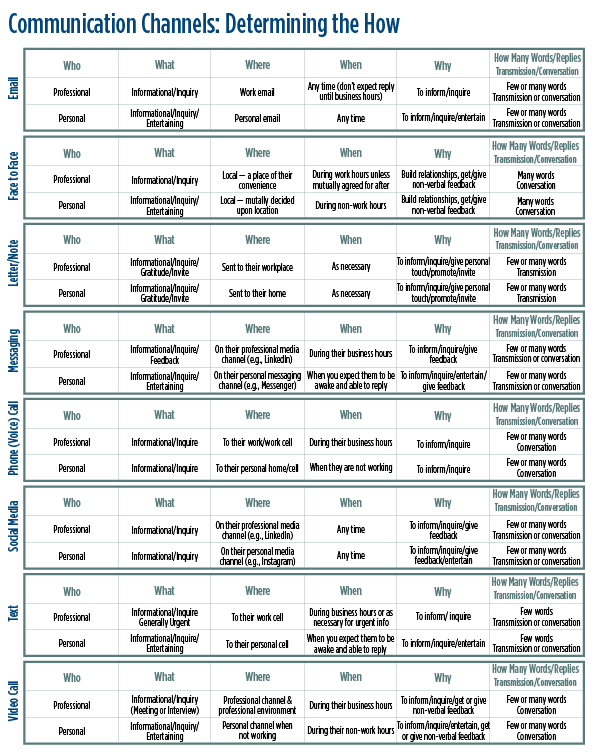Effective Communication
Communication breakdown can be more than frustrating, it can be detrimental. It is always important to say what you mean and mean what you say, but in today’s world there are many channels through which to say it. So how do you choose the appropriate channel?
When I was growing up — and yes, I am dating myself — the only way to communicate with someone was face to face, on the phone or by sending a letter. Choosing the method through which to communicate was mostly determined by geographic location since long-distance calls had a considerable cost to them: Grandma in Florida got a letter, my best friend in town got a phone call and face to face happened at home or at school.
Today, in addition to phone, letter and face to face, communication channels include texting, messaging, email, social media and video calls. So how do you know which channel is the best choice? There are several factors to consider and answering Who, What, Where, When, Why and How Many will determine the How.
Who
With whom are you communicating? Is it a personal or business contact? Do you have a casual or formal relationship? Generational differences are a factor as are comfort levels with different forms of communication.
What
What do you want to communicate? Is it personal or business? Is it informational? Is it serious or laugh-inducing?
Where
Where are you and where are they? Are you in the same house, office building, city, state, country?
When
When are you communicating? Is it during business hours or would people be at home? Is the person you are communicating with in the same time zone as you?
Why
Why are you communicating? Is it an urgent message? Do you want to inform or entertain? Are you seeking information?
How Many
How many communications will it take to complete the communication? Is it long or short (how many words)? Does it require a lot of back and forth (conversation)? Is it a one-way communication (transmission)?
How
Use the decision flow chart (to the left) and communication channel matrix (next page) to help you determine How to communicate best. Please note that there are exceptions. There may be a professional relationship which has developed into a personal relationship and there is an understanding that personal communication is appropriate.
The Who, What, Where, When, Why and How Many concepts will be expanded in future articles.

Related Content
-
Do You Have a Quoting Process?
The only way to have repeatable results is to have a process.
-
Craftsman Cribsheet No. 126: AISI System of Identification
Source: PMPA Prior to the Society of Automotive Engineers taking responsibility for Steel Grade nomenclature in the United States (1995), the American Iron and Steel Institute determined U.S. standard steel grades in collaboration with SAE.
-
Roles of Women in Manufacturing: What I Learned
Over 20 women were featured in the Roles of Women in Manufacturing series, which started in January 2023.















